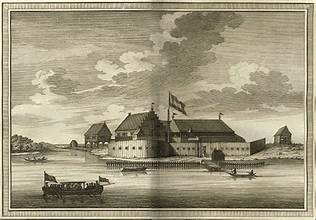Fort Nassau, located on the Berbice River in Guyana, was established in 1627 by the Dutch as a trading post and defensive structure. It served as the capital of the Dutch colony of Berbice and played a significant role in the region’s colonial history. The fort was initially constructed of timber and later rebuilt with bricks and palisades for added defense.
The settlement around Fort Nassau became a hub for trade, with the Dutch exchanging goods like knives and cloth for tobacco and annatto. However, the fort faced challenges, including attacks from the French in 1712 and its eventual destruction during the 1763 Berbice Slave Rebellion to prevent its capture by rebelling enslaved people.
By 1785, Fort Nassau was abandoned in favor of Fort Sint Andries, located further downstream. Today, the ruins of Fort Nassau are a national monument, offering a glimpse into Guyana’s colonial past and the resilience of its people.


